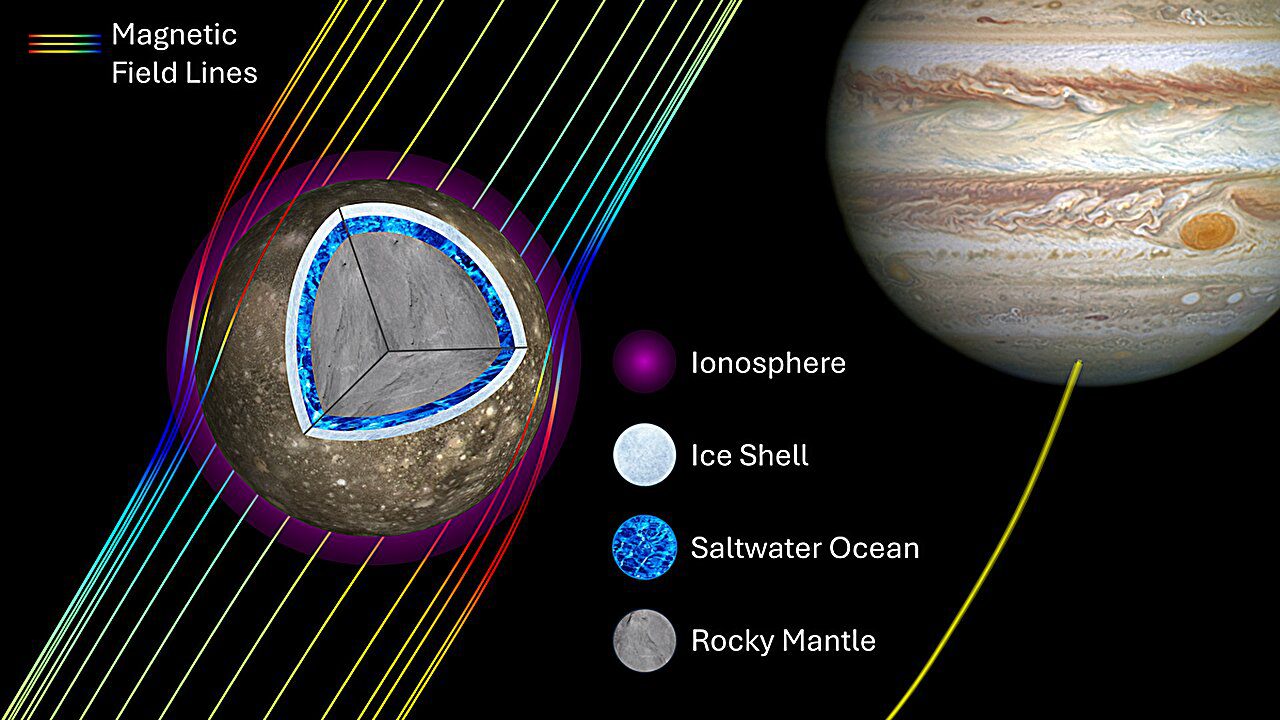

Callisto, Jupiter’s outermost major moon and the second largest among the Galilean moons, is heavily cratered and appears geologically dull compared to other celestial bodies. However, magnetic data collected in the 1990s by NASA’s Galileo spacecraft raised intriguing possibilities that Callisto might have a subsurface salty ocean similar to that of Europa, another Jovian moon.
Despite this tantalizing hypothesis, evidence for an ocean beneath Callisto’s icy surface has been unclear due to a dense ionosphere. Researchers suspected that this electrically conductive layer might mimic the magnetic signals one would expect from a salty ocean below.
In a new study, scientists revisited the data from Galileo, analyzing all available magnetic readings from the spacecraft’s eight close approaches to Callisto. Their comprehensive review presents much stronger evidence supporting the idea that Callisto indeed harbors a subsurface ocean.
This exciting research was documented in a paper published in AGU Advances journal.
Employing advanced statistical methods alongside computational models of Callisto’s ionosphere and geological characteristics, researchers determined that while the ionosphere alone cannot account for all gathered data, the combination of an underground ocean and the ionosphere can. This innovative investigation also projects that the ocean’s depth could extend at least tens of kilometers from the liquid’s surface to its seabed, lying beneath a solid ice crust that may vary from tens to hundreds of kilometers deep, supporting a rocky interior beneath.
These pivotal findings pave the way for upcoming spacecraft missions aimed at definitively answering whether Callisto is indeed an ocean world. NASA’s Europa Clipper and the European Space Agency’s JUICE (Jupiter Icy Moons Explorer) missions, both currently en route, are set to gather crucial measurements of this enigmatic moon. Furthermore, China’s future Tianwen-4 mission may also focus on observing Callisto.
Validating the existence of an ocean beneath Callisto’s surface could lead to further exploration into the moon’s potential to support extraterrestrial life, similar to the research sparked by evidence suggesting an ocean exists on Europa.
For more details:
Corey J. Cochrane et al, “Stronger Evidence of a Subsurface Ocean Within Callisto From a Multifrequency Investigation of Its Induced Magnetic Field,” AGU Advances (2025). DOI: 10.1029/2024AV001237
This article is republished with permission from Eos, provided by the American Geophysical Union. You can read the original piece here.
Citation:
“Jupiter’s moon Callisto is very likely an ocean world” (2025, February 18)
retrieved 18 February 2025 from https://phys.org/news/2025-02-jupiter-moon-callisto-ocean-world.html
This document is subject to copyright. Apart from any fair use for private study or research, no part may be reproduced without written permission. The content is intended for informational purposes only.









